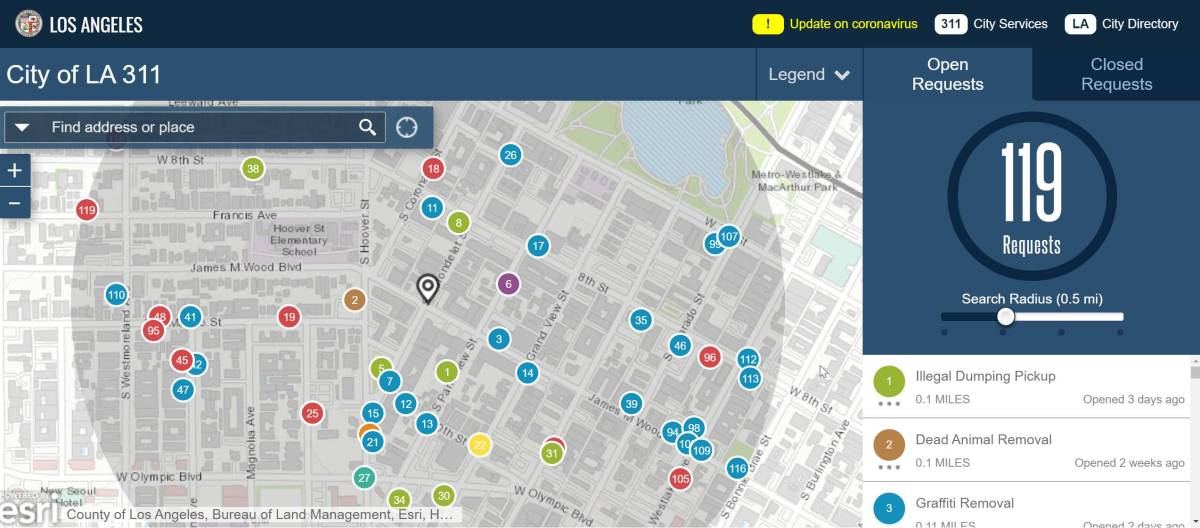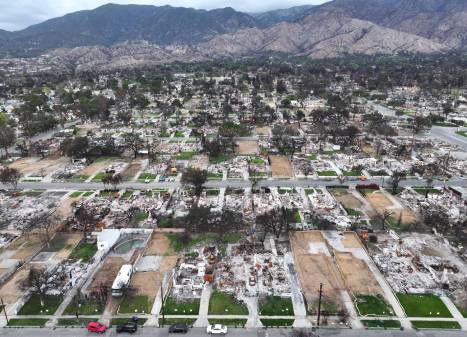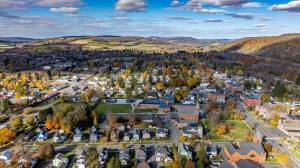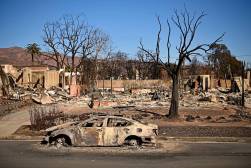L.A. is ‘democratizing’ open data with new community platform

A new platform from Los Angeles Mayor Eric Garcetti’s office is localizing the city’s troves of demographic and 311 data and “democratizing” access to data in the process, officials told StateScoop.
Los Angeles is in the midst of preparing a public launch for its “Know Your Community” platform, an Esri-powered digital suite detailing almost anything that a Los Angeles resident would want to know about their neighborhood in premade interactive maps, graphs and charts.
So far the tools include a real-time map showing with the locations and descriptions of service requests. There’s also an application that allows users to sort through demographic data — by average neighborhood income, commute, age and housing information, all collected via the American Community Survey. And there’s a map that details the health care and public safety information of each neighborhood.
The platform was soft-launched last August by a team led by Preston Mills, community data manager for the mayor’s data team. Mill said the platform uses data already available on the city’s open data portal, but provides it in easily digestible graphics.
“We realized that we had a geohub — a place with so much open data, particularly geospatial data where you can see things on maps — but what we also realized was that that platform was only great for folks who knew how to leverage data, for folks who knew how to take advantage of analyzing different components,” Mills said.
Mills and his team partnered with the city’s Information Technology Agency and the Department of Neighborhood Empowerment, as well as the data analytics firm Civis Analytics, to begin publishing data onto a new platform.
“In our open data community engagement work, we realized that some folks are able to manipulate tabular data and extract the insights that they’re looking for, but sometimes that can be a barrier for others,” said Eva Pereira, the city’s deputy chief data officer. “We wanted to deliver insights that are ‘ready’ rather than expecting people to do their own analysis and filtering.”
After building pipelines from the city’s geohub to the new platform, Mills said, he and the city’s data team engaged community leaders in the neighborhood council system to determine what information should be included on the app.
“Many of these organizations didn’t necessarily know how to take advantage of data, or maybe never used their own data,” Mills said. “And so this program was really built to say let’s actually find a way to train them and build a model in which they can sustain that work after the program.”
Mills said he found people want to easily find the basics, like their neighborhood’s general population, the number of residents on assistance programs or what community events are happening — like “a tree-planting event on a Friday night,” Mills said.
The city’s neighborhood councils, composed of elected board members, also shared what data they thought should be prioritized on the platform. When users log on and click their neighborhood, they can see where they can vote, a list of active building and safety permits, open 311 requests and contact information for their elected neighborhood officials.
Moving forward, Mills said, the data team will focus on adding city data streams to address racial equity on the Know Your Community platform.
“What we really wanted to do is make sure the underlying data provided by our city departments is accessible, maintained and sustainable, and so the next step is how can we make this a bit more interactive for folks in terms of actual events and things like that,” Mills said.






